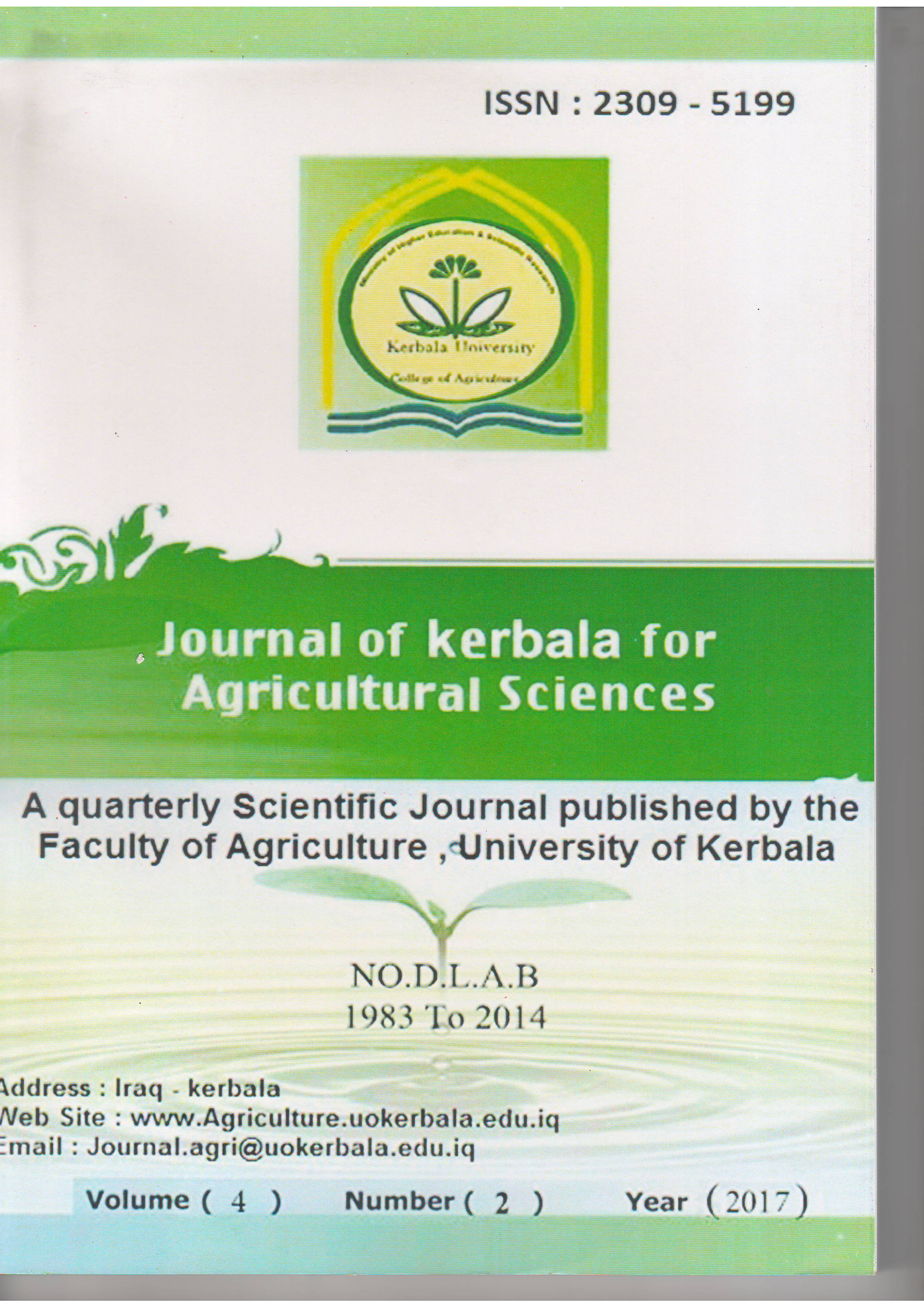Effect of adding different levels of ginger powder diet on productive performance of Rose broiler
DOI:
https://doi.org/10.59658/jkas.v4i2.165Keywords:
: Food additives , Ginger powder, Herbal medical plants, Ginger tubersAbstract
This research was conducted in the field of domesticated birds in the Department of Animal Production techniques / Musayyib Technical College about the effect of adding different levels of ginger powder to feed on some productive traits of broiler chickens Rose during the period from 25/03/2016 up to 05/05/2016 using 250 sheet of smolts meat Rose strain-old one-day non-naturalized Ashaaiaa that have been distributed to five transactions (50 birds per treatment) and solving treated by any two frequencies (5 birds each repeater)Experiment included five transactions: Treatment first T1: fed a control diet without any additions. The second transaction T2: add them (0.5%) of ginger powder to a normal diet. Third treatment T3: add them (1%) of ginger powder to a normal diet. Fourth T4 treatment: add them (1.5%) of ginger powder to a normal diet. Treatment five o'clock T5: add them (2%) of ginger powder to a normal diet. Results indicate that T5 treatment showed (2%) significant superiority on all transactions and transactions (T4, T3, T2) in turn outperformed the moral control treatment T1 in the rate of body weight.As well as the treatment T5 outperformed the rest of the transactions, while T4 treatment outperformed the transactions T3, T2 and which in turn Tvoukta the control treatment to increase the weight cumulative. Feed consumption: moral differences did not appear at the age of 4 weeks between transactions from time T1 control treatment showed a significant increase in feed consumption on the rest of the transaction as well as the treatment T2 showed a significant increase in feed consumption on transactions (T5, T4, T3). For feed conversion coefficient excelled T5 treatment at all Alpmaamlat outperformed the place of transaction (T4, T3, T2) my game control treatment. The ratio of Almaah Hlakat: transactions showed the T2 - T5 significant decrease (P <0.05) in the percentage of Hlakat compared with the control treatment. Alncesph Almaah for Tsafa: outperformed all transactions of T5-T2 in the ratio of Almaah Tsafa the control treatment.
Downloads
Published
How to Cite
Issue
Section
License
Copyright (c) 2017 Copyright (c) 2024 is the Author's article. Published by the Journal of Kerbala for Agricultural Sciences under a CC BY 4.0 license

This work is licensed under a Creative Commons Attribution 4.0 International License.
Licensing Terms
All articles are published under a Creative Commons License and will be directed to the Creative Commons Attribution 4.0 International License (CC BY 4.0) That permits use, distribution, and reproduction in any medium, provided the original work is properly cited. This license also allows the work to be used for commercial purposes.
Use by both non-commercial and commercial users
This content is licensed under a Creative Commons Attribution 4.0 International (CC BY 4.0) license, permitting use by both non-commercial and commercial users. Individual users may access, download, copy, display, and redistribute the articles to colleagues, as well as adapt, translate, and text- and data-mine the content, subject to the following conditions:
- The author's moral rights, including the right of attribution and the right to protect their work from derogatory treatment, are respected.
- Where content in the article is identified as belonging to a third party, users must ensure that any reuse complies with the copyright policies of the owner of that content.
- If the article content is reused for research or educational purposes, users should maintain a link to the appropriate bibliographic citation, including the DOI and a link to the published version on the journal's website.

